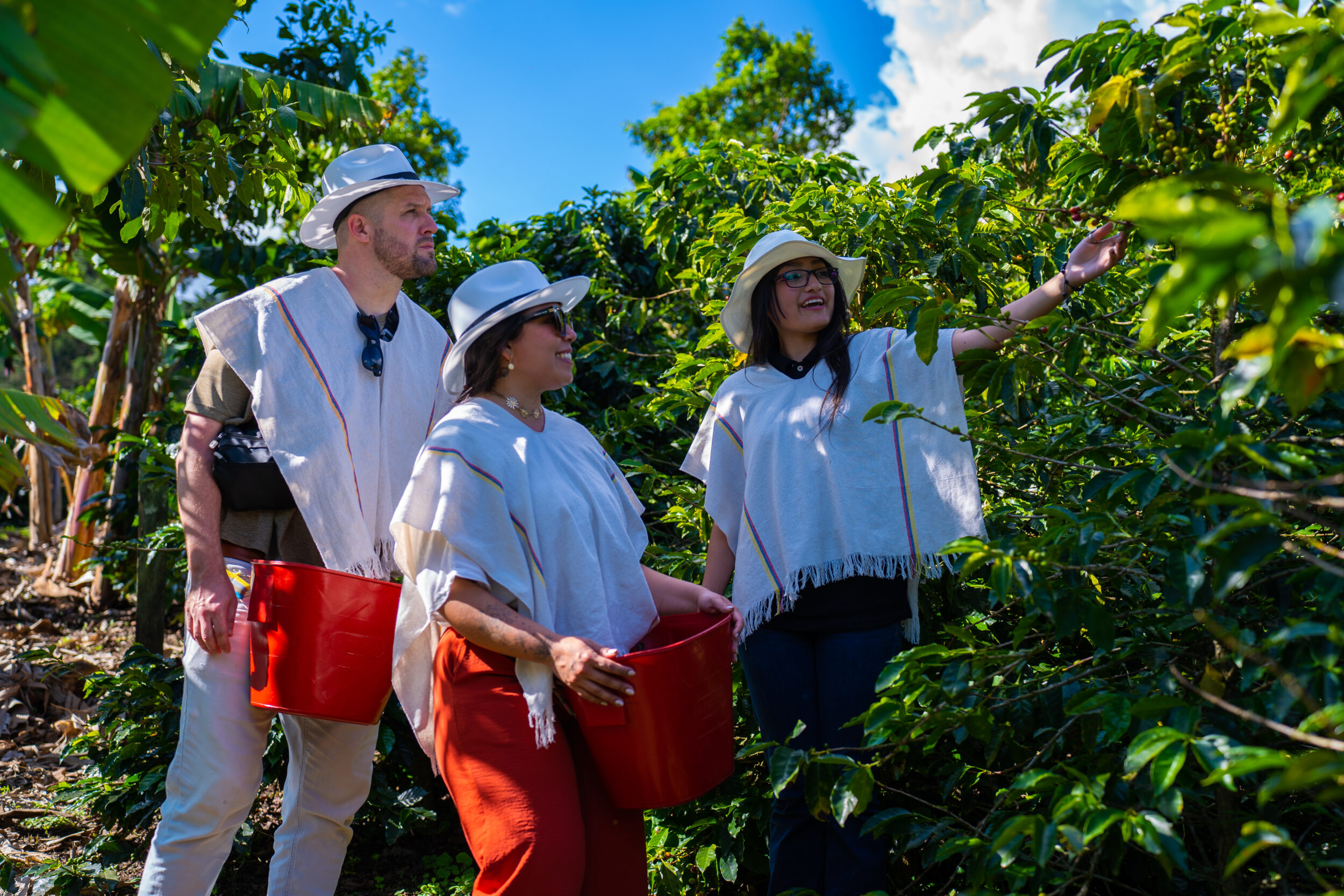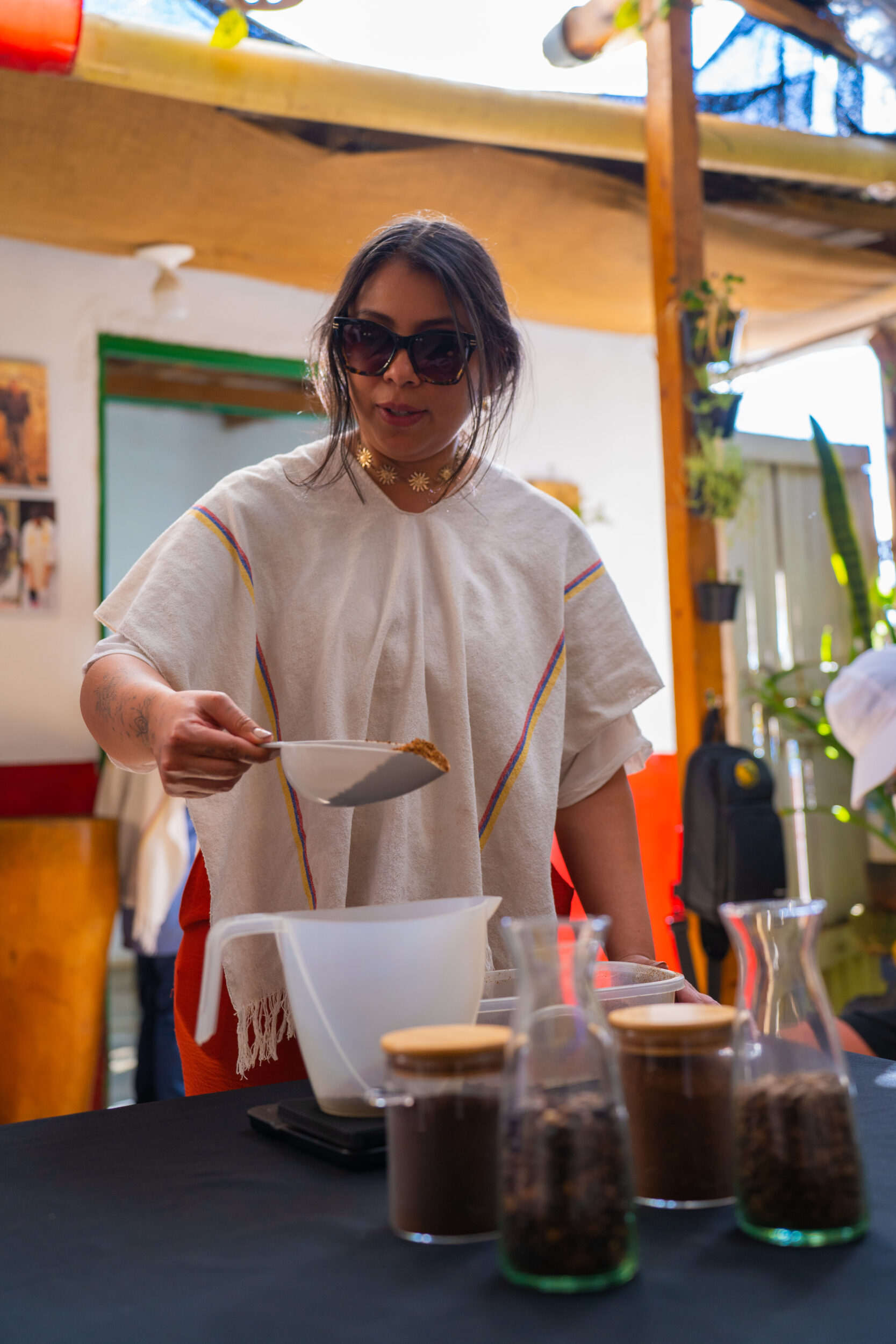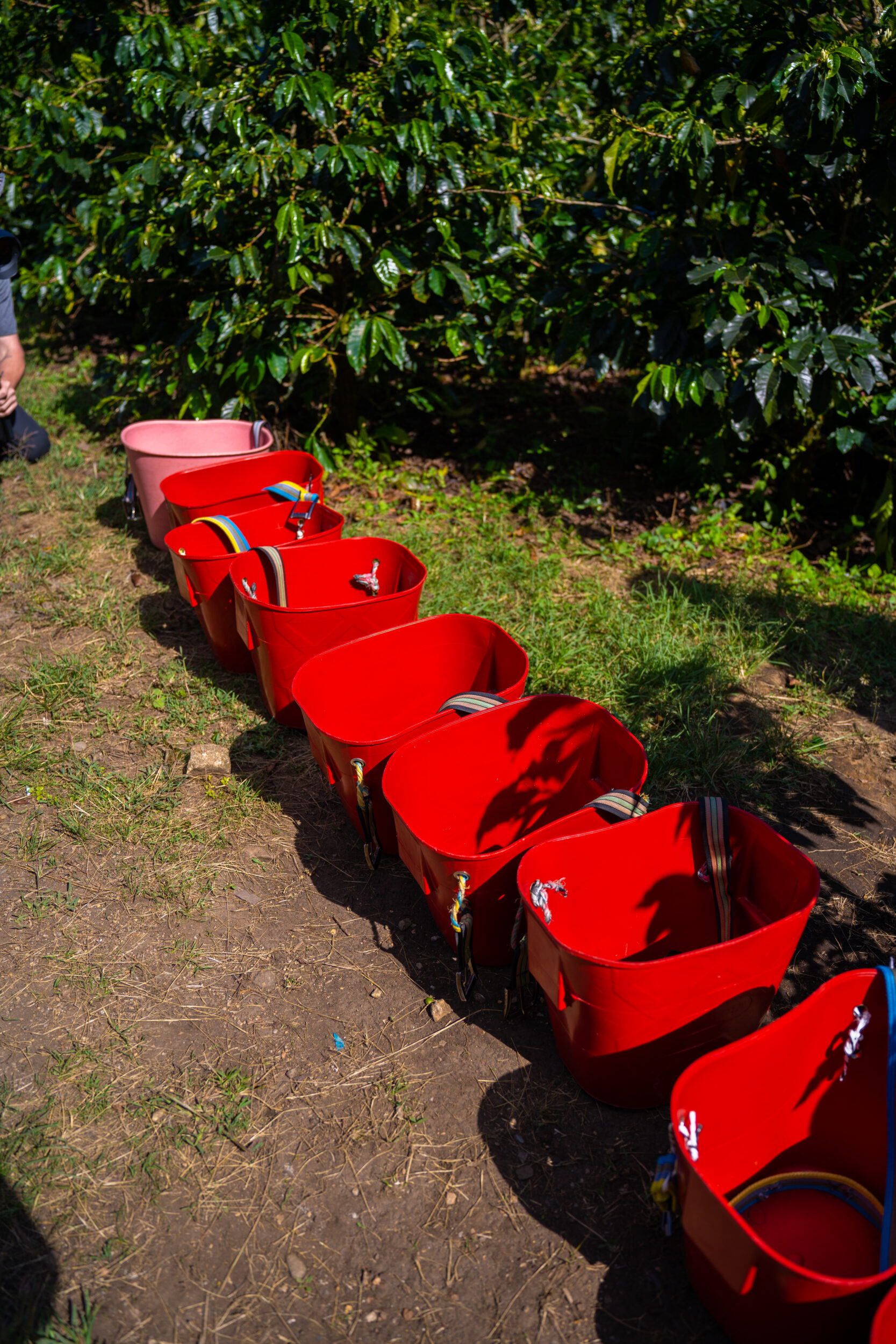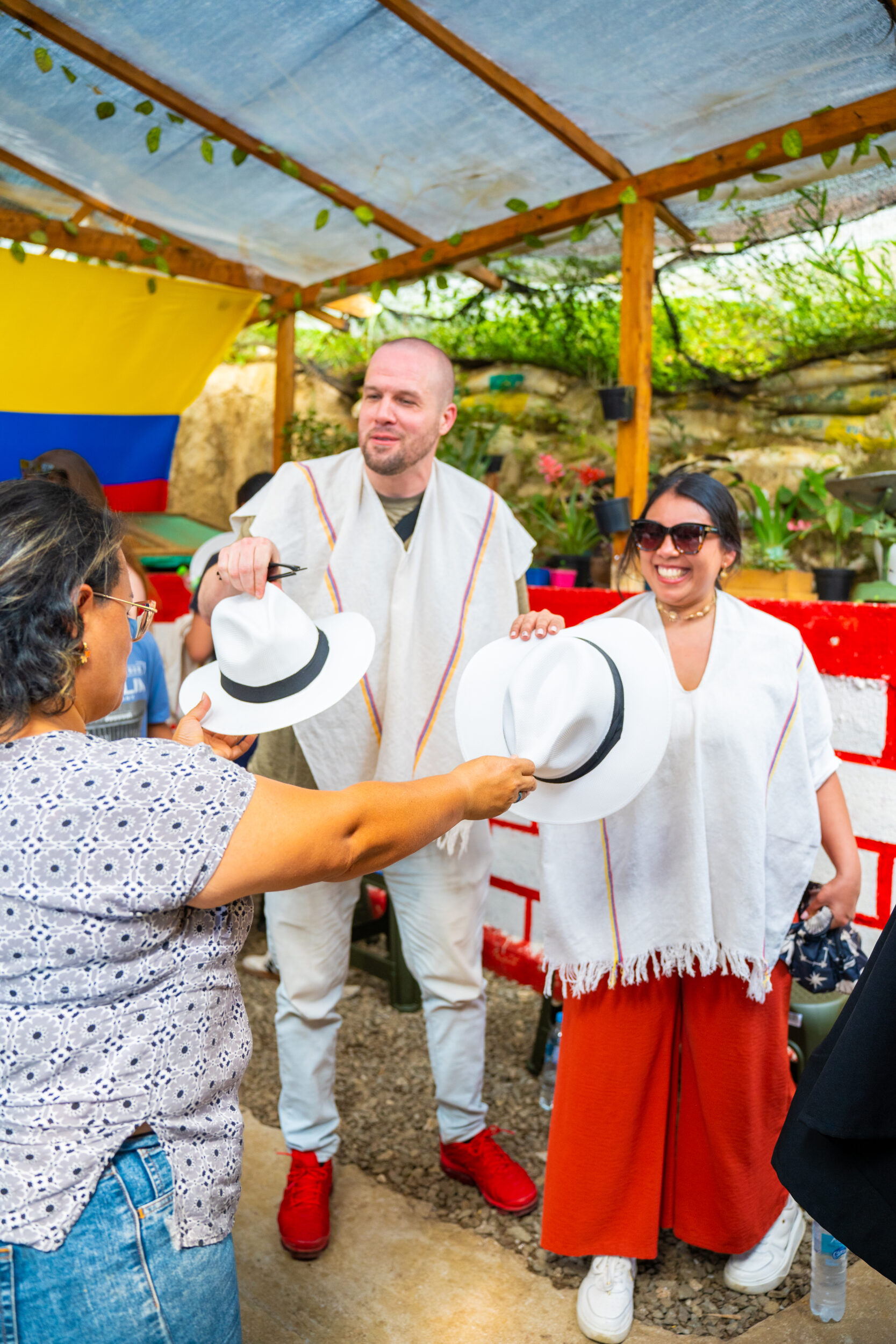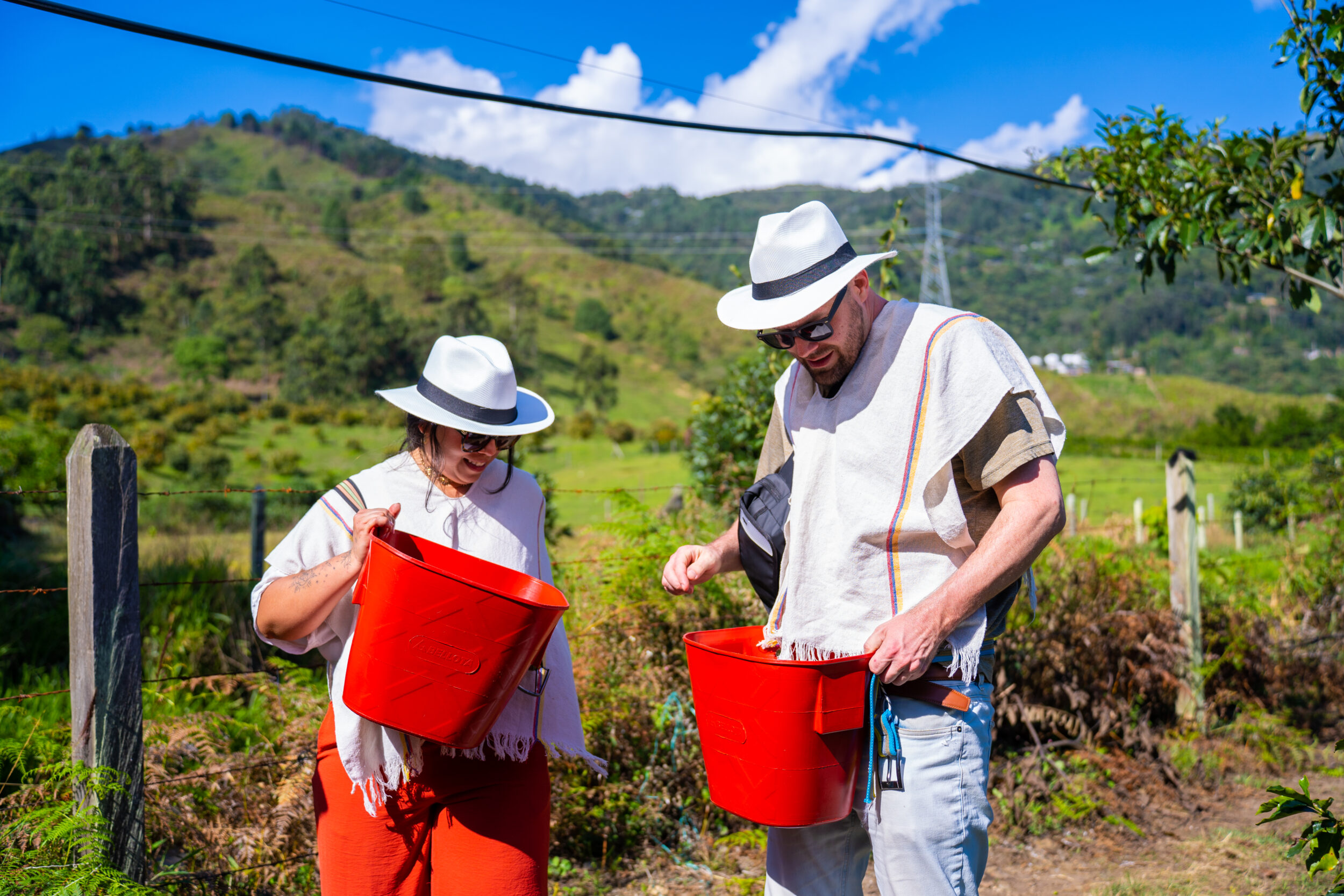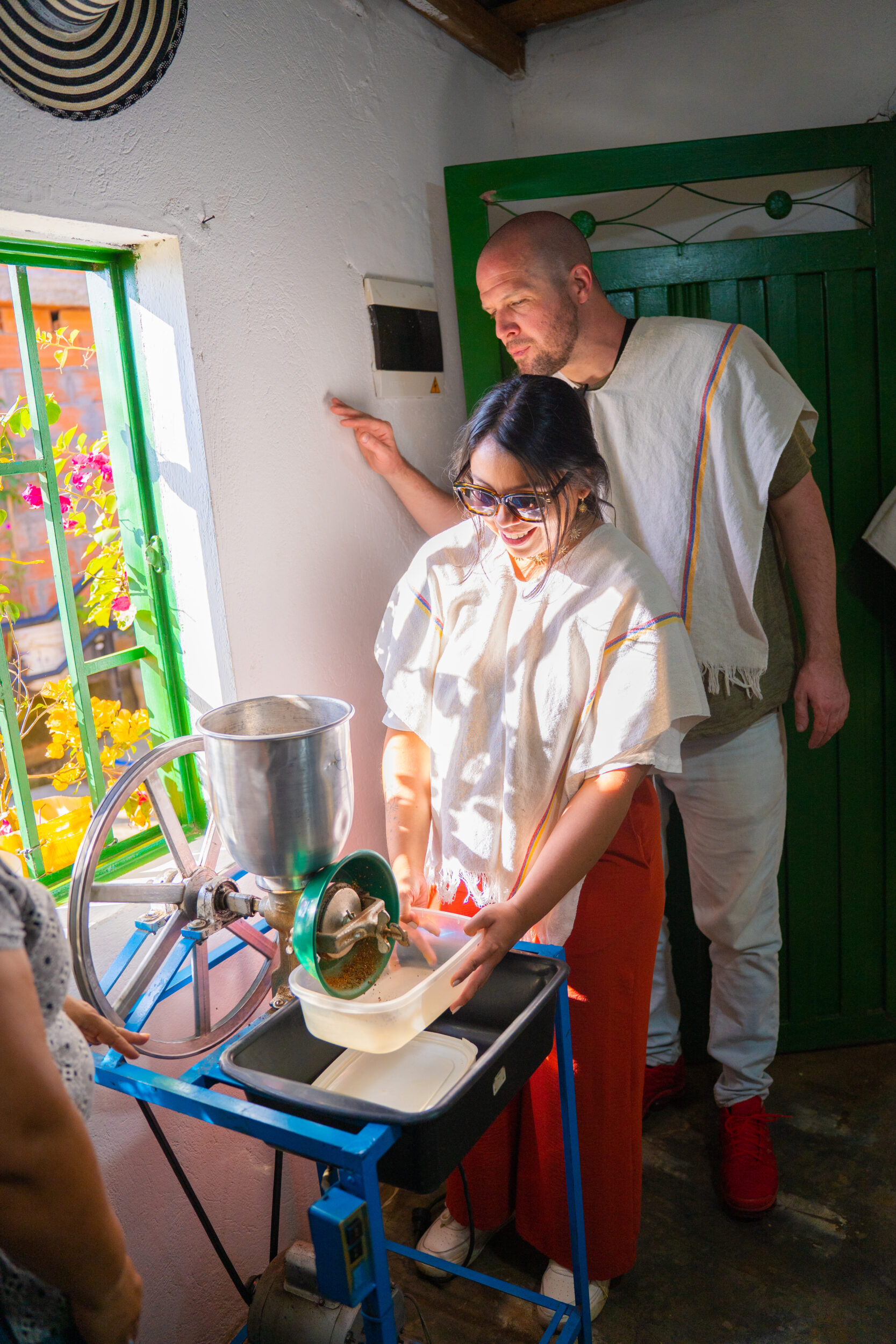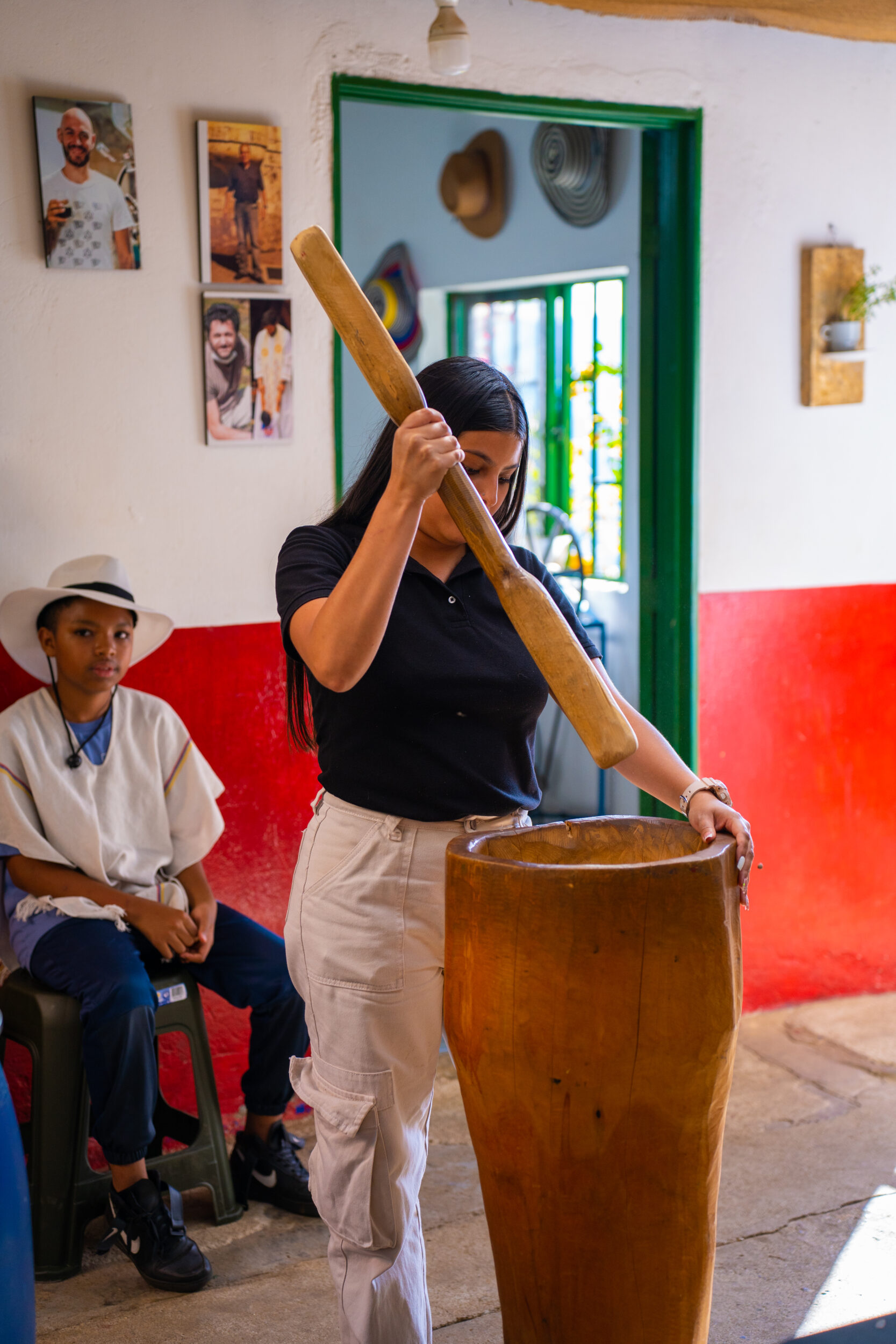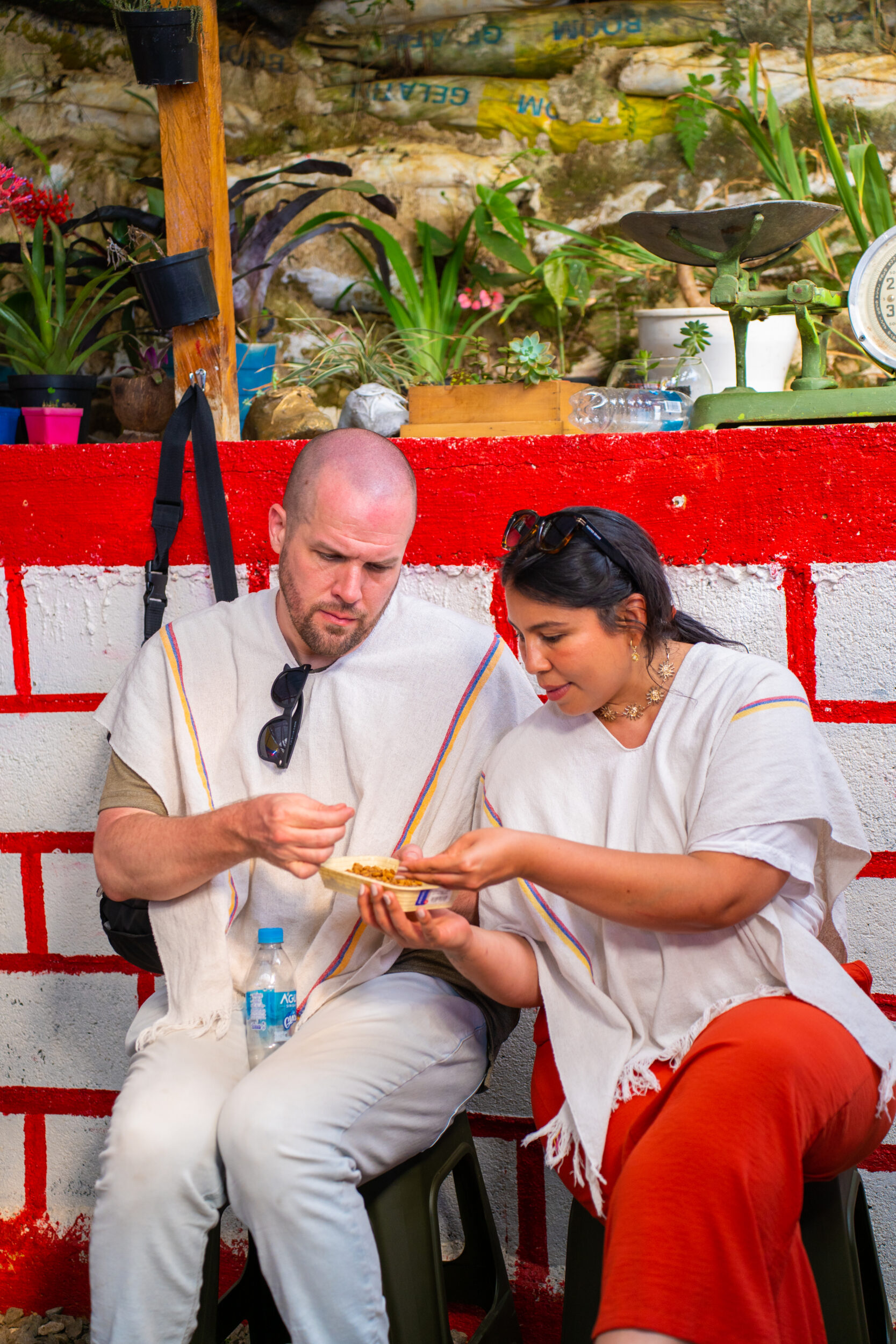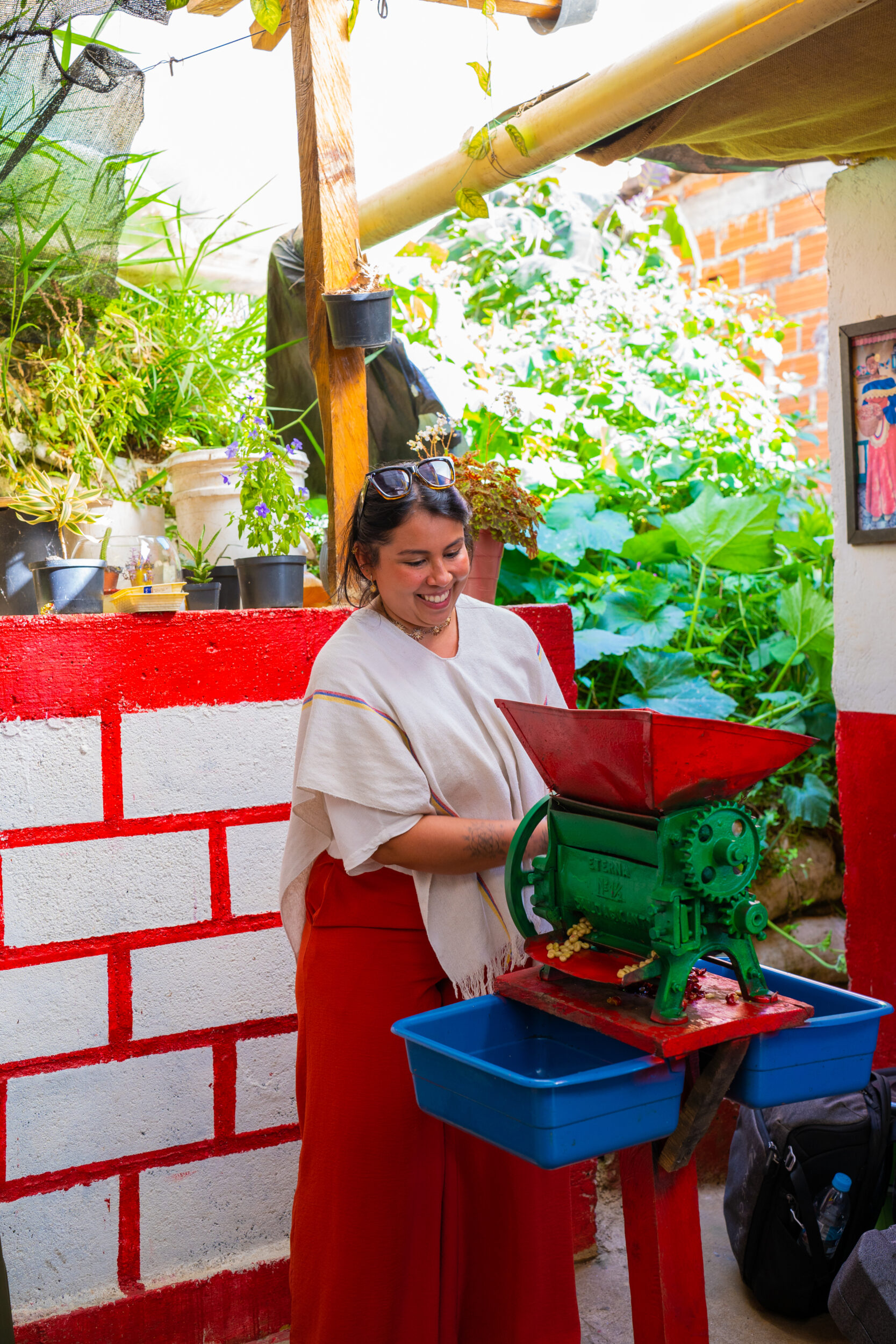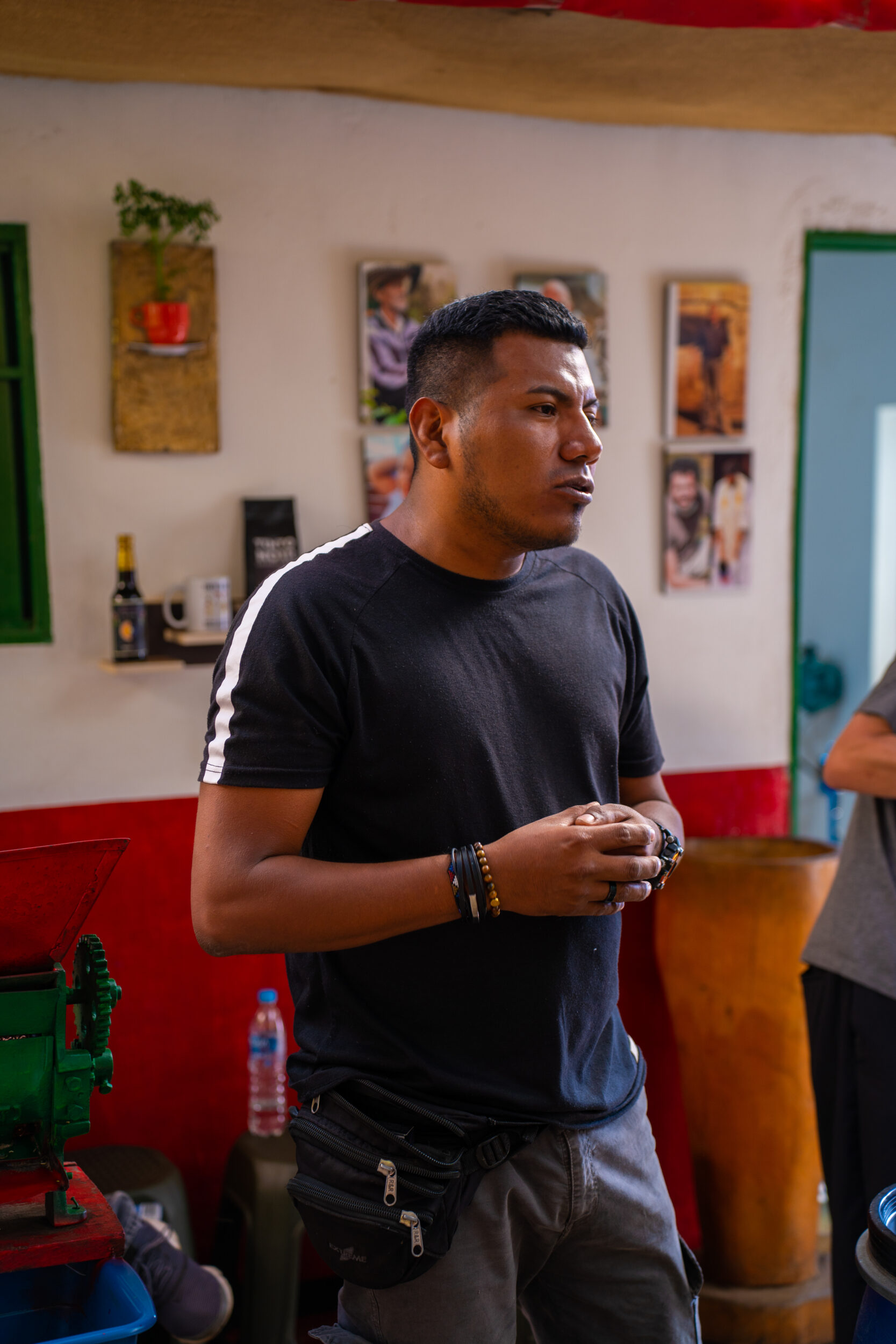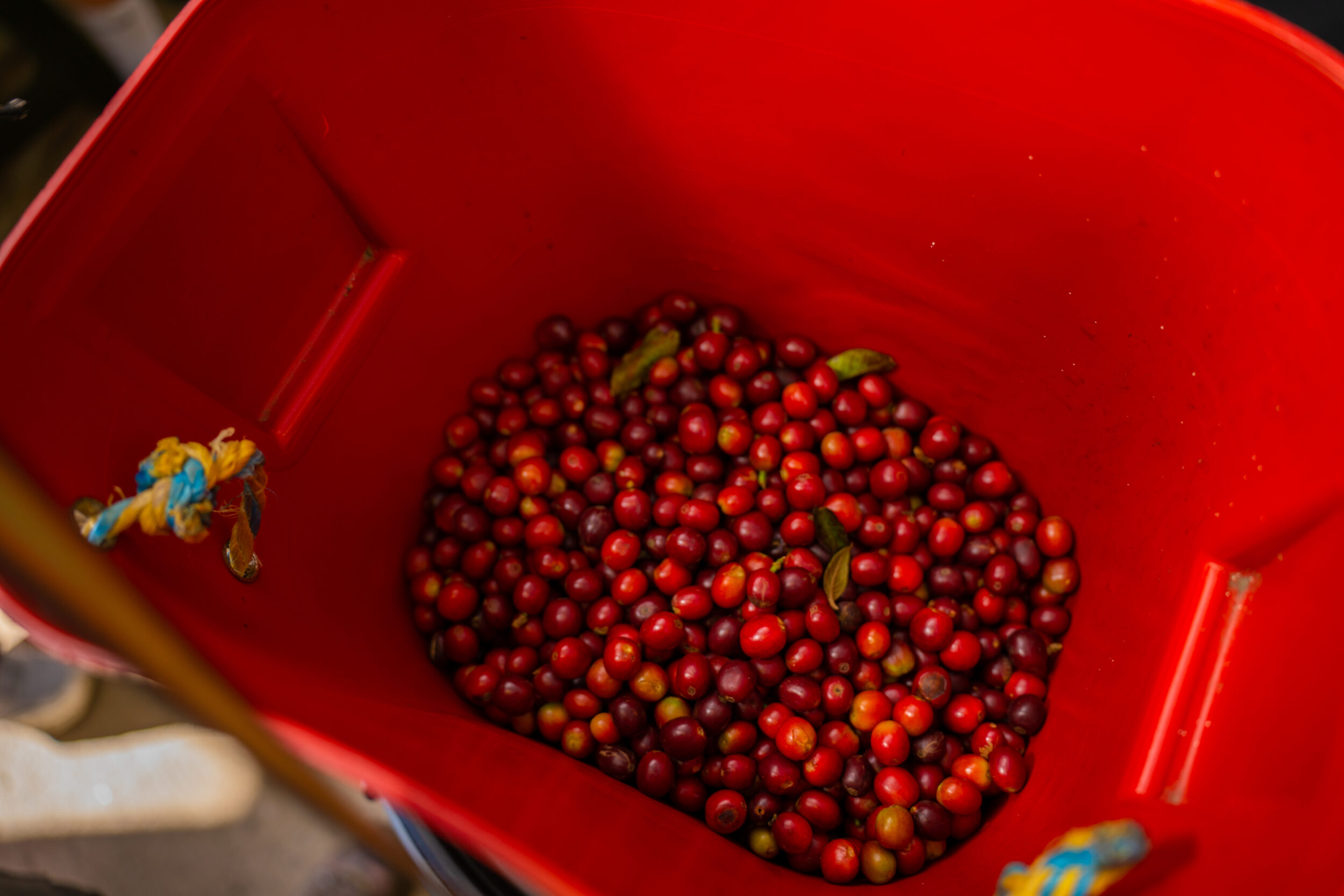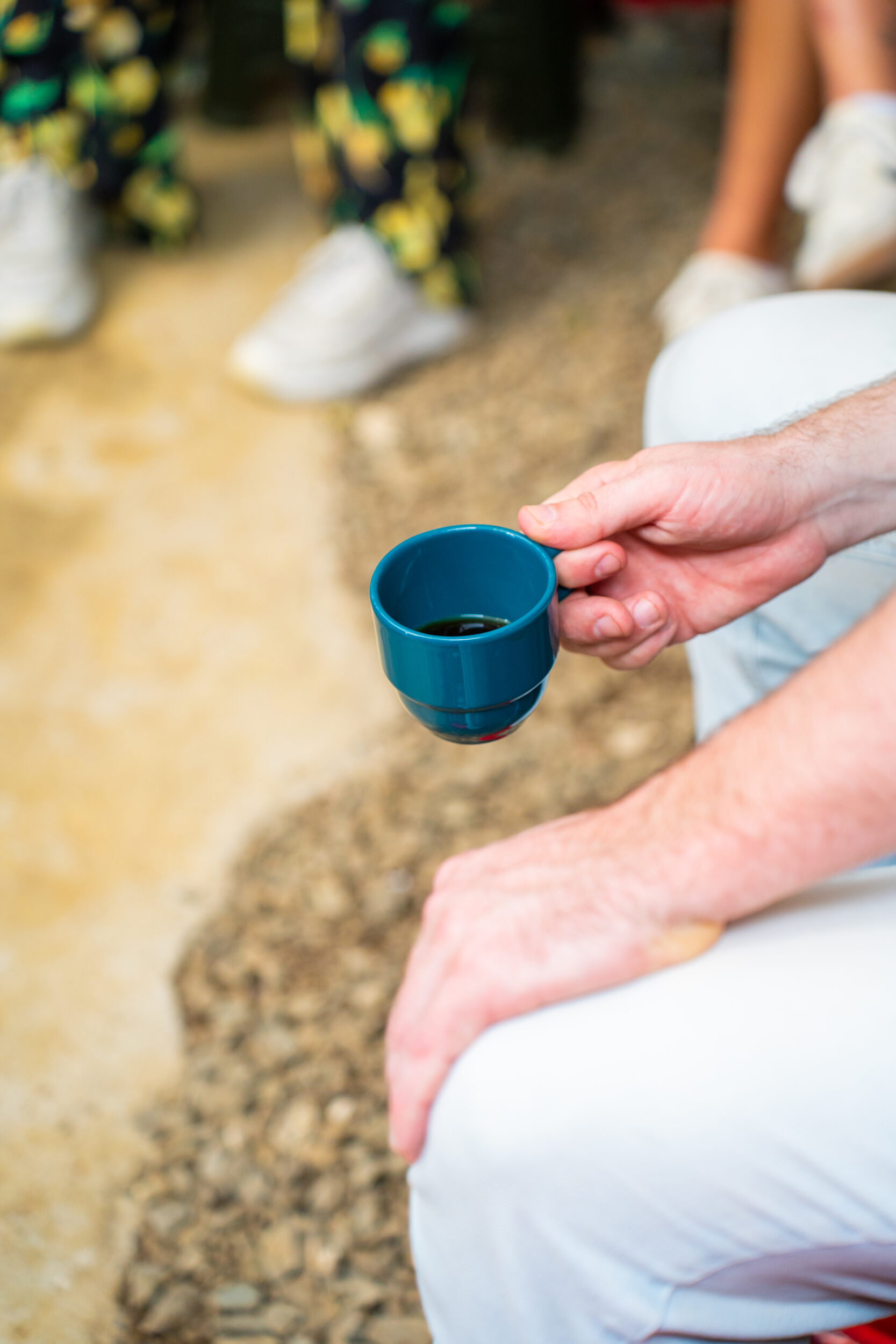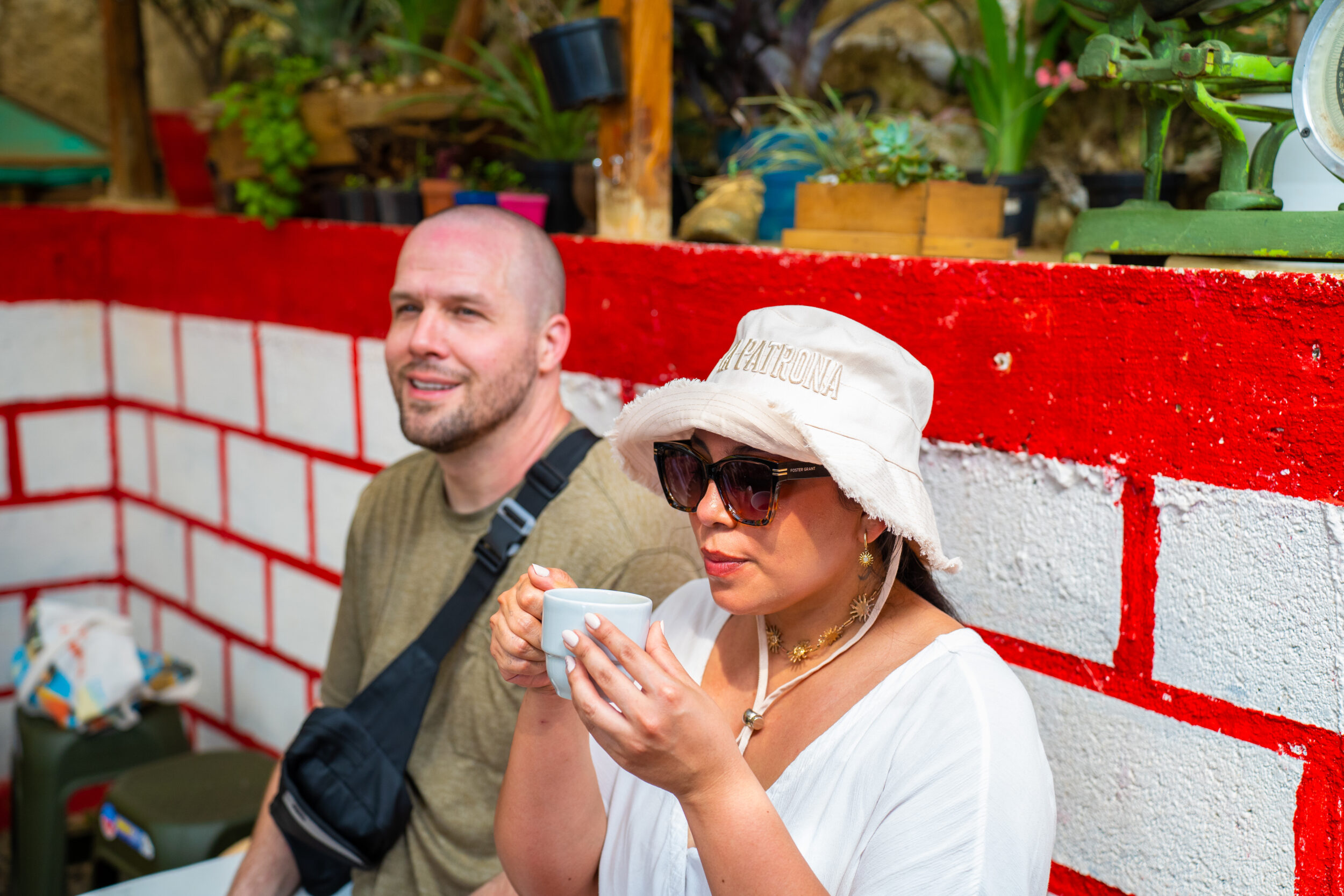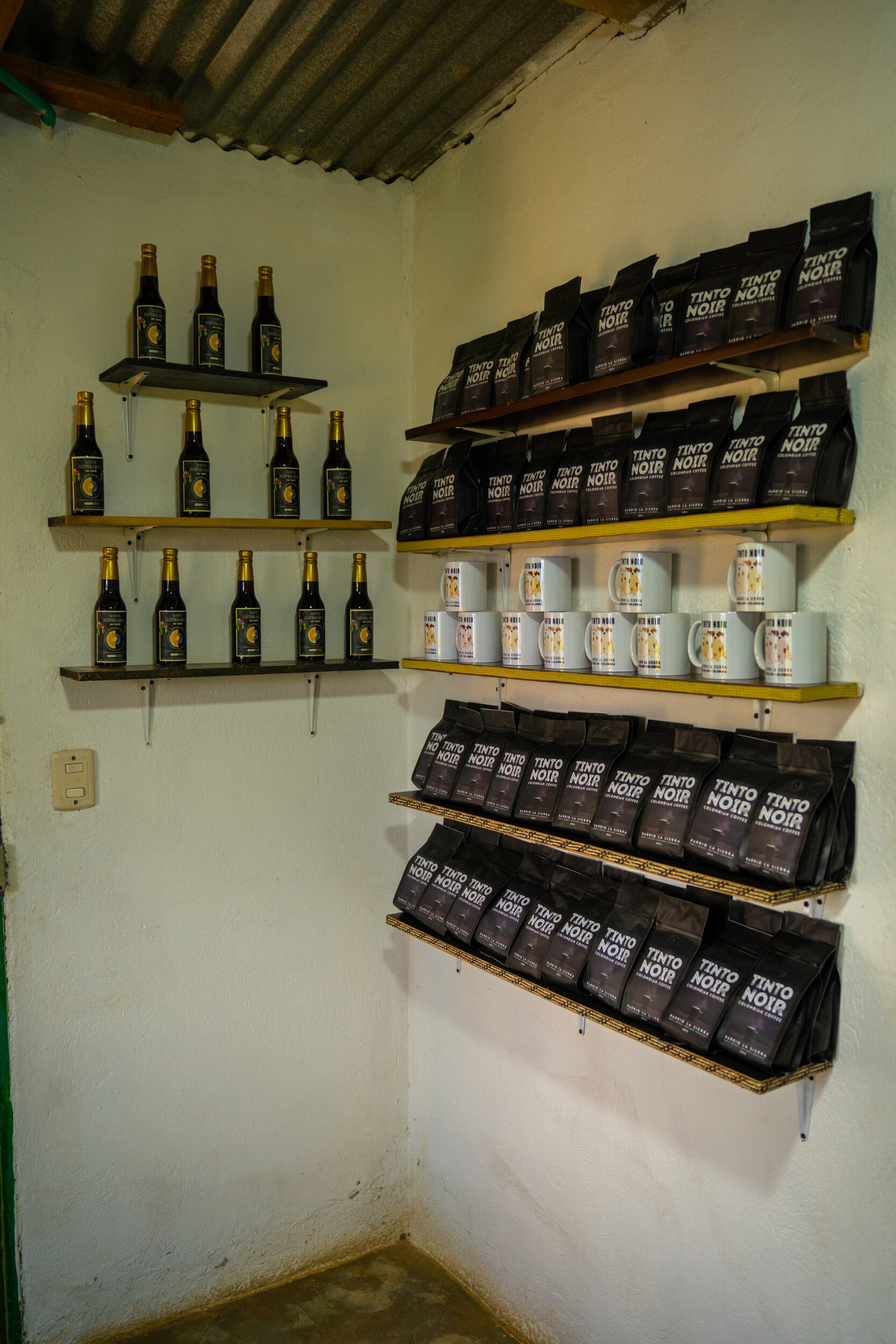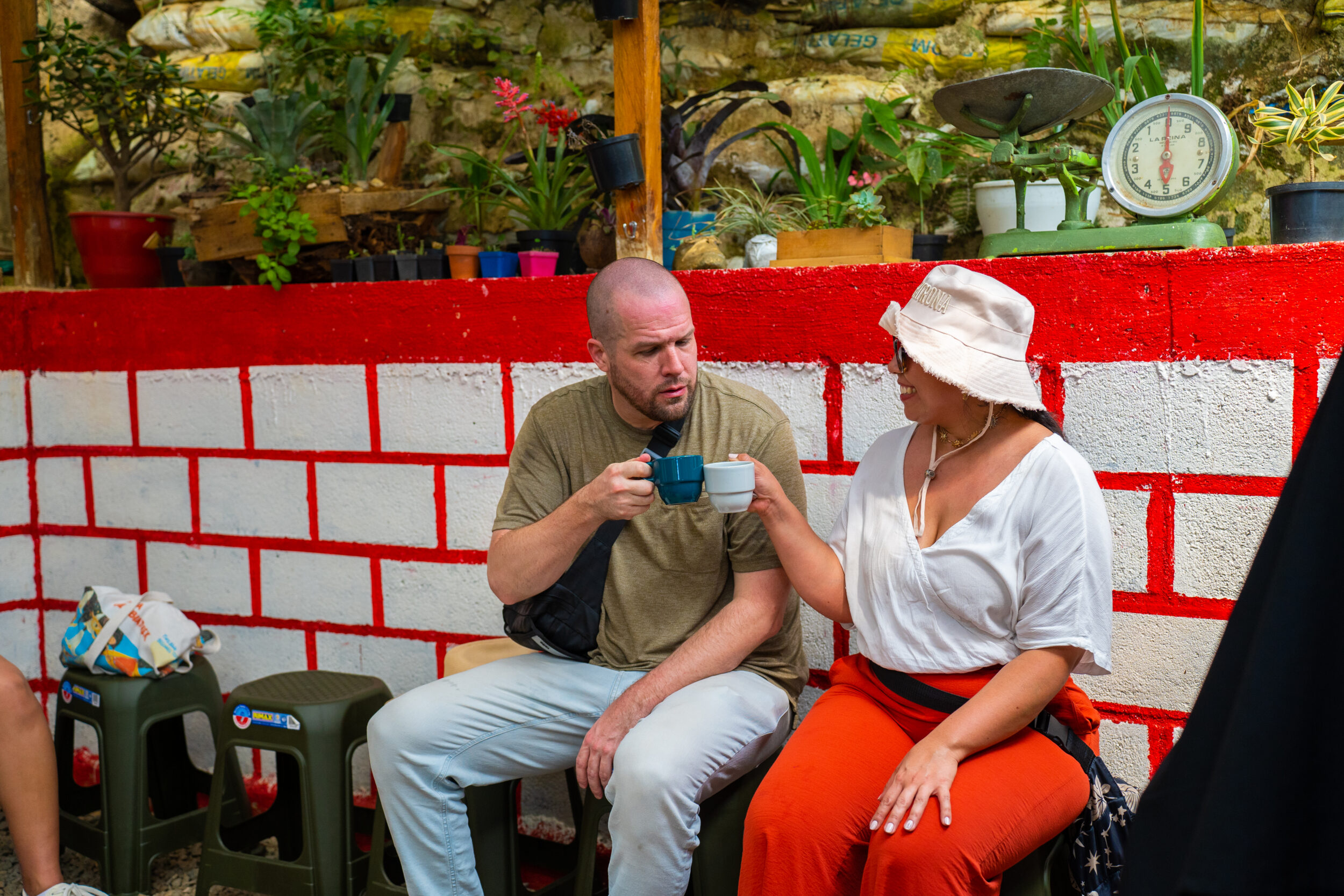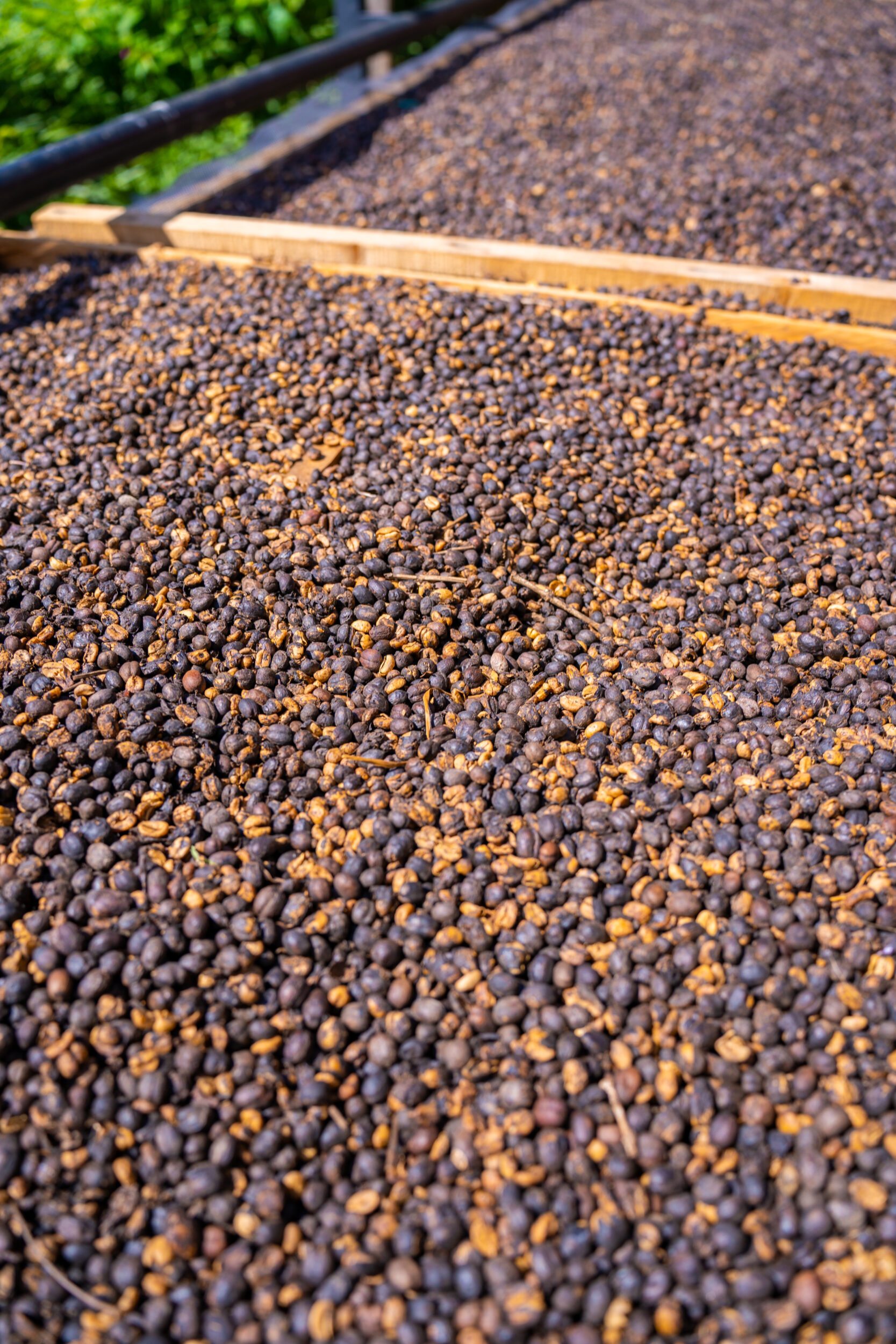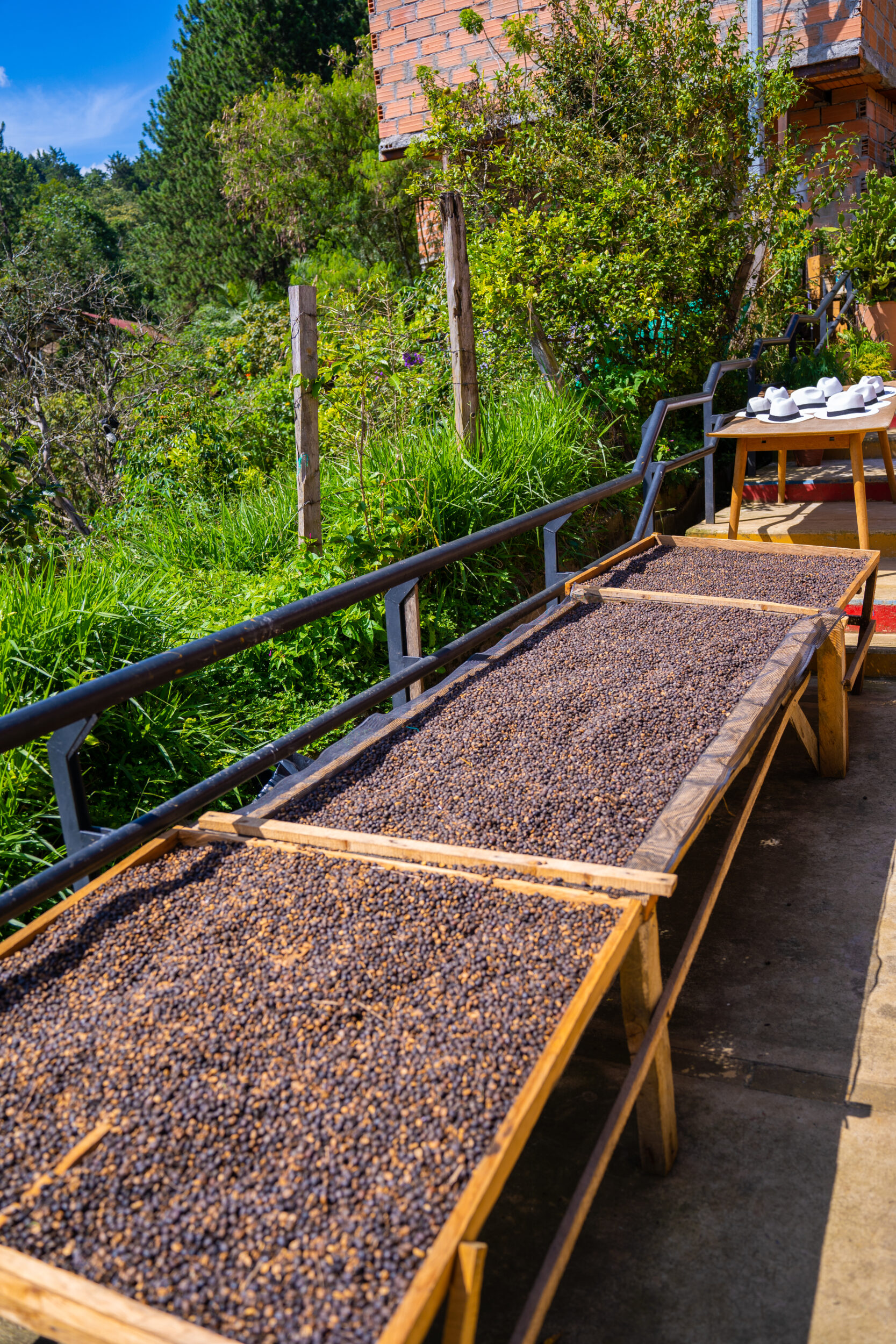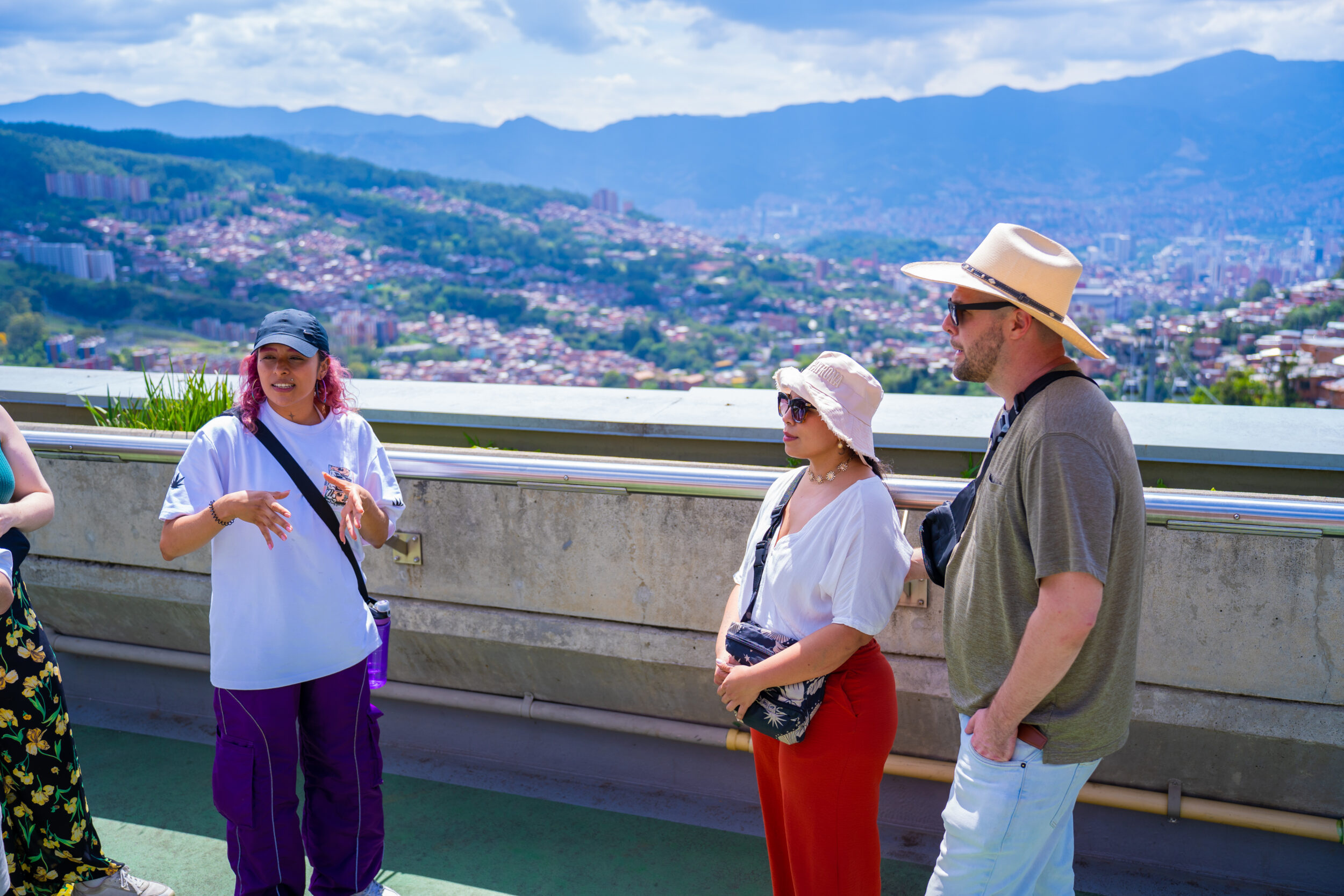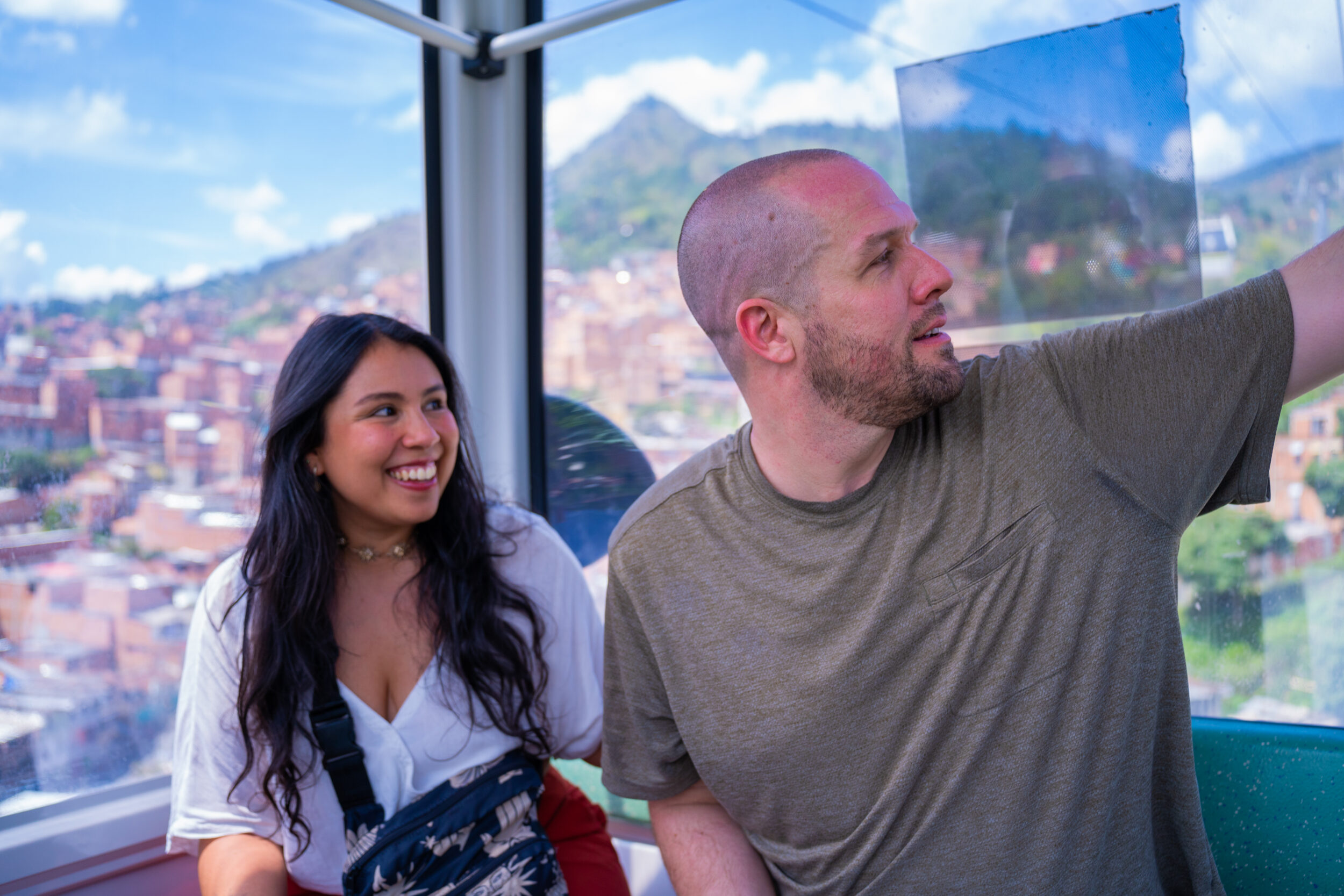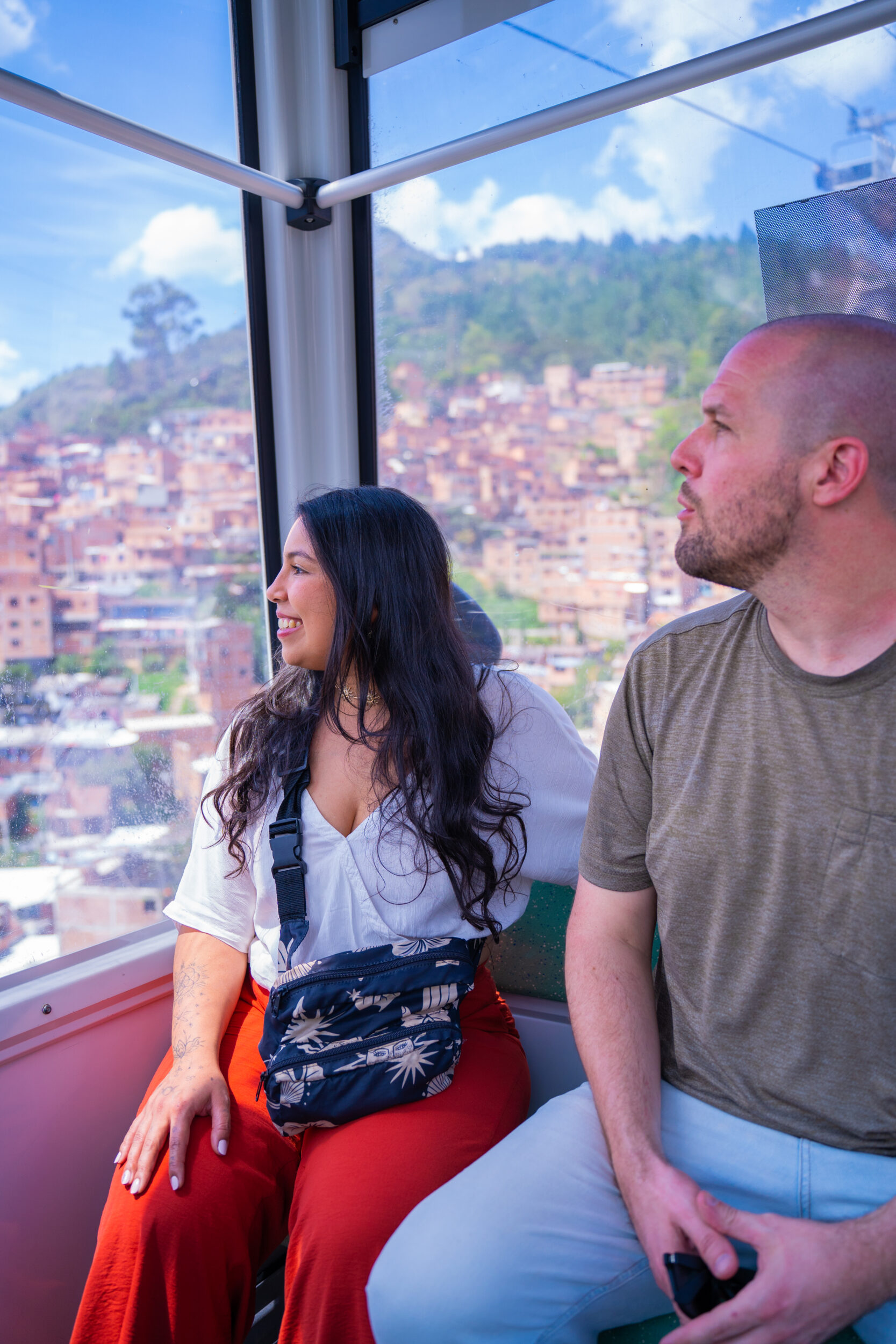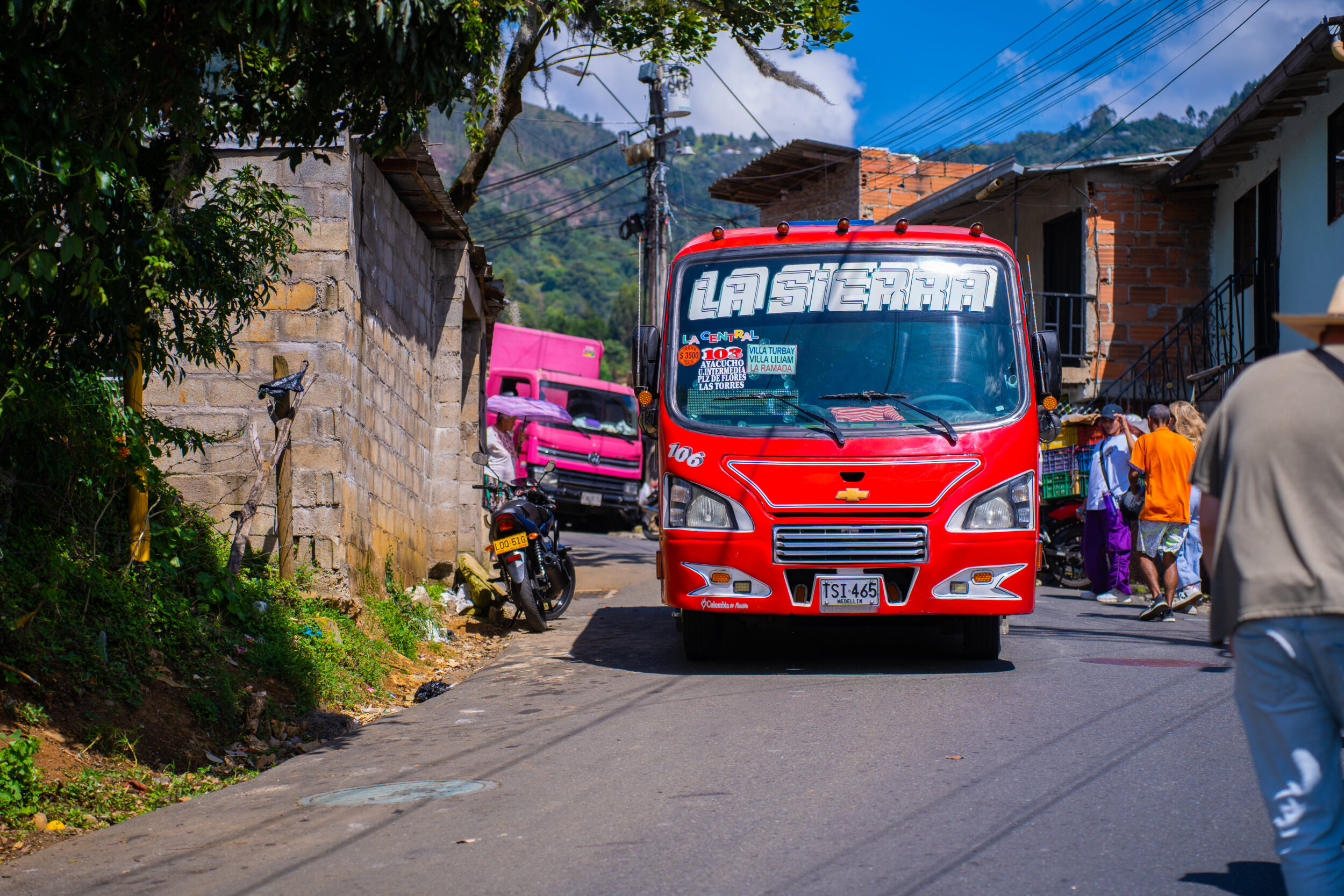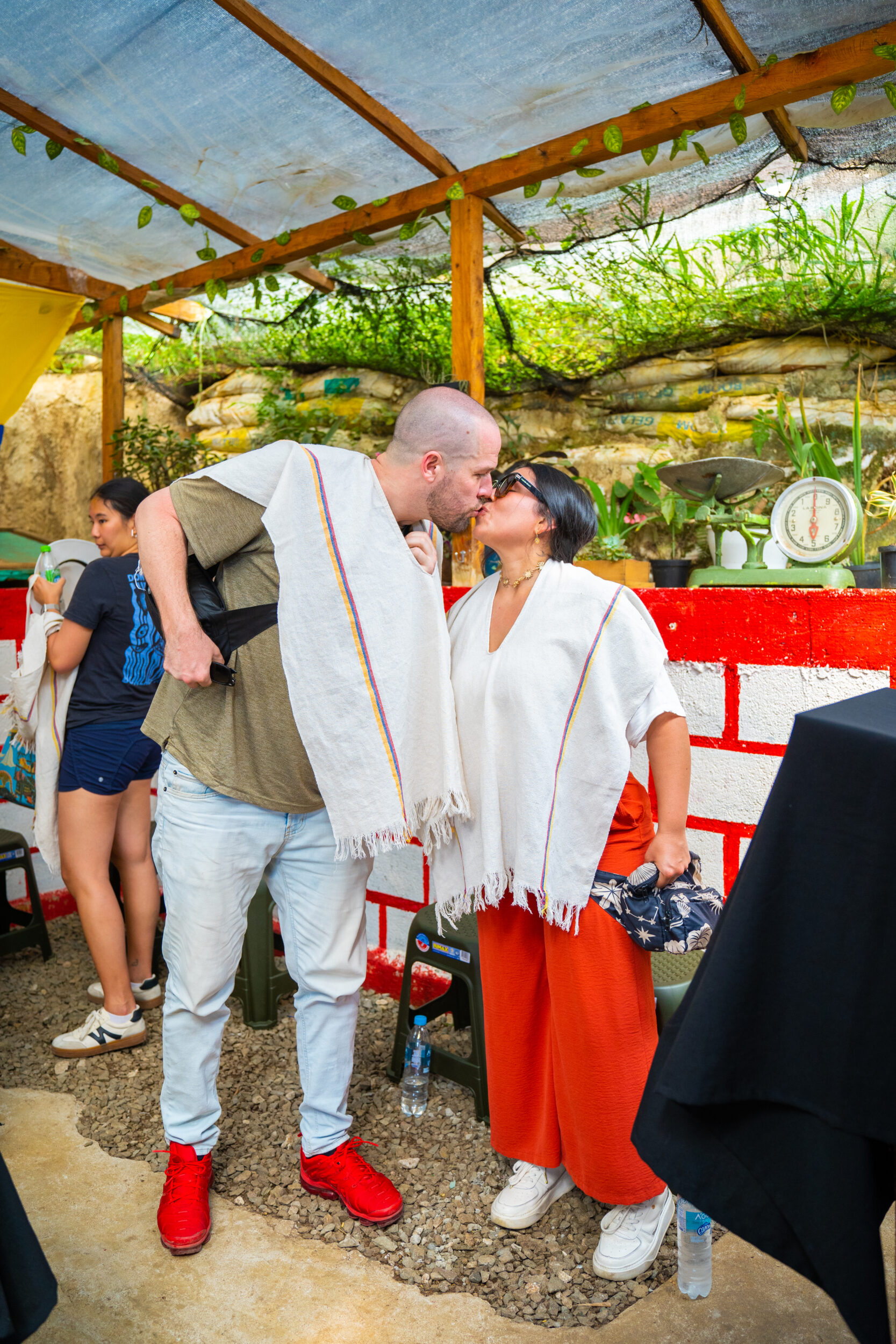Medellin Coffee Farm Tour
What to expect during the Medellin Coffee Tour
You will meet your guide downtown at a meeting point. From there you will travel by railcar to the cable car (metro cable). From there you will go to Barrio La Sierra, a once infamous barrio for violence, now a spot reborn with tourism. It is a beautiful coffee farm nestled in the heart of Medellin, with an amazing story to tell. And, they have the best coffee we have had from Antioquia!
When you get off of the metro cable, you will need to walk uphill a few blocks, and then up 250 stairs to get to get to the coffee farm. You will experience real barrio life in Medellin on your way up to the coffee farm. The neighborhood is very welcoming to tourists and you will have the option to purchase cold refreshments and fruits and snacks along the way if you choose.
Once at the coffee farm, you’ll have a nice shady spot to sit and learn the history of the family’s coffee operation in Barrio La Sierra. You will learn the entire coffee production process from seed to cup. You will also do it hands on, so you can actually learn the entire process.
This is a special experience for tourists and locals in Medellin.
A Brief History of Colombian Coffee:
In Colombia, our breathtaking landscapes of mountains and lush coffee plantations immerse us in a world of captivating aromas, rich textures, and delightful flavors, which all accompany the cherished tradition of coffee cultivation in our country. With a history of around 300 years, the captivating tale of Colombian coffee is believed to have begun when Jesuit fathers introduced this magical elixir to our land. It is said that the national coffee culture was indirectly promoted by Jesuit priest Francisco Romero, who assigned coffee planting as a penance for his parishioners during confessions.
The year 1835 marked a significant milestone when the first bags of coffee produced in the eastern zone were exported through the Cúcuta customs office. These seeds paved the way for coffee’s presence in the northeastern department of Santander, and by 1850, it had spread to the central and western regions, encompassing Cundinamarca, Antioquia, and the area formerly known as Caldas.
The late 19th century witnessed an astounding surge in production, growing from 60,000 sacks to over 600,000 sacks. It’s worth noting that the majority of this production came from the estates of large landowners, and by the close of the century, coffee had become Colombia’s main export, contributing significantly to foreign currency earnings.
To further strengthen the coffee industry, the National Federation of Coffee Growers was established in 1927 to represent the interests and welfare of coffee growers.
In 1938, a pivotal milestone was achieved with the founding of the research center, CENICAFE, which was responsible for groundbreaking achievements, including the development of the rust-resistant Castillo variety.
The year 1959 brought forth two momentous events for Colombian coffee. Firstly, the iconic character of Juan Valdez was born, becoming a symbol of our coffee culture. Secondly, the first Colombian Coffee office was inaugurated in Tokyo, propelling Japan to become the second-largest consumer of Colombian coffee worldwide.
In 1984, the distinctive seal of Café de Colombia was created, becoming a recognizable mark that represents Colombian coffee’s exceptional quality across the globe.
check availability
Reserving your tour is easy. Simply choose the date, number of persons, language preference, and upgrades. After that just enter your name, email and phone. Add a message if needed (dietary restrictions, health issues, baby seats, etc.) and then choose to pay with card or Paypal and follow the instructions.


